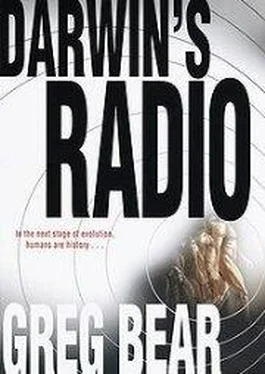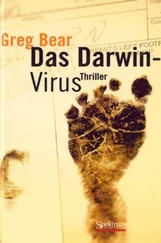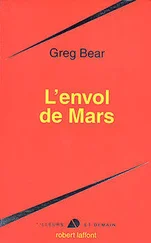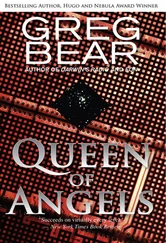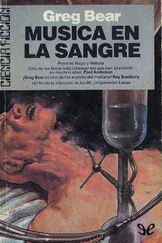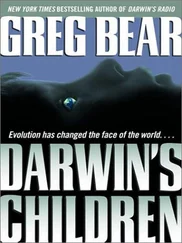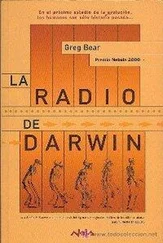Cross cackled like an old hen.
32
The University of Washington, Seattle
Wendell Packer told Mitch to meet him in his office in the Magnuson building. The room in the E wing was small and stuffy, windowless, packed with shelves of books and two computers, one of them connected to equipment in Packer’s laboratory. This screen showed a long series of proteins being sequenced, red and blue bands and green columns in pretty disarray, like a skewed staircase.
“I did this one myself,” Packer said, holding up a long folded printout for Mitch. “Not that I don’t trust my students, but I don’t want to ruin their careers, either. And I don’t want my department slammed.”
Mitch took the printout and thumbed through it.
“I doubt it makes a lot of sense at first glance,” Packer said. “The tissues are way too old to get complete sequences, so I looked for small genes unique to SHEVA, and then I looked for products created when SHEVA enters a cell.”
“You found them?” Mitch asked, feeling his throat constrict.
Packer nodded. “Your tissue samples have SHEVA. And they’re not just contaminants from you or the people you were with. But the virus is really degraded. I used antibody probes sent to us from Bethesda that bind to proteins associated with SHEVA. There’s a follicle stimulating hormone that’s unique to SHEVA infection. Sixty-seven percent match, not bad considering the age. Then I relied on a little information theory to design and fabricate better probes, in case SHEVA has mutated slightly, or differs for other reasons. Took me a couple of days, but I got an eighty percent match. To make doubly sure, I did a Southwestern blot test with Herod’s provirus DNA. There are definitely bits of activated SHEVA in your specimens. Tissue from the male is thick with it.”
“You’re sure it’s SHEVA? No doubt, even in a court of law?”
“Considering the source, it wouldn’t survive in a court of law. But is it SHEVA?” Packer smiled. “Yes. I’ve been in this department for seven years. We have some of the best equipment money can buy, and some of the best people that equipment can seduce to join us, thanks to three very rich young folks at Microsoft. But…Sit down, please, Mitch.”
Mitch looked up from the printout. “Why?”
“Just sit.”
Mitch sat.
“I have a bonus. Karel Petrovich in Anthropology asked Maria Konig, just down the hall, the best in our lab, to work on a very old tissue sample. Guess where he got the sample?”
“Innsbruck?”
Packer held out another sheet of paper. “They asked Karel specifically to go to us. Our reputation, what can I say? They wanted us to search for specific markers and combinations of alleles most often used to determine parental relationship. We were given one small tissue sample, about a gram. They wanted very precise work, and they wanted it quick. Mitch, you got to swear to absolute secrecy on this.”
“I swear,” Mitch said.
“Just out of curiosity, I asked one of the analysts about the results. I won’t go into boring details. The tissue comes from a newborn. It’s at least ten thousand years old. We looked for the markers and found them. And I compared several alleles with your tissue samples.”
“They match?” Mitch asked, his voice breaking.
“Yes…and no. I don’t think Innsbruck is going to agree with me, or with what you seem to be implying.”
“I don’t imply. I know .”
“Yes, well, I’m intrigued, but in a courtroom, I could wriggle your male out of responsibility. No prehistoric child support. The female, however, yes. The alleles match.”
“She’s the baby’s mother?”
“Beyond a doubt.”
“But he’s not the father?”
“I just said I could wriggle him out of it in a courtroom. There’s some weird genetics going on here. Real spooky stuff that I’ve never seen before.”
“But the baby is one of us.”
“Mitch, please don’t get me wrong. I’m not going to back you up, I’m not going to help you write any papers. I have a department to protect, and my own career. You of all people should understand that.”
“I know, I know,” Mitch said. “But I can’t go it alone.”
“Let me feed you a few clues. You know that Homo sapiens sapiens is remarkably uniform, genetically speaking.”
“Yes.”
“Well, I don’t think Homo sapiens neandertalensis was all that uniform. It’s a real miracle that I can tell you that, Mitch, I hope you understand. Three years ago, it would have taken us eight months to do the analysis.”
Mitch frowned. “I’m losing you.”
“The infant’s genotype is a close match to you and me. She’s close to modern. Mitochondria! DNA in the tissue you gave me matches with samples we have from old Neandertal bone. But I’d say, if you did not look at me too critically, that the male and female that supplied your samples are her parents.”
Mitch felt dizzy. He bent over on the chair and rested his head between his knees. “Christ,” he said, his voice muffled.
“A very late contender to be Eve,” Packer said. He held up his hand. “Look at me. Now I’m trembling.”
“What can you do, Wendell?” Mitch asked, lifting his head to stare up at him. “I’m sitting on the biggest story in modern science. Innsbruck is going to stonewall, I can just smell it.
They’ll deny everything. It’s the easy way out. What do I do? Where do I go?”
Packer wiped his eyes and blew his nose into his handkerchief. “Find some folks who aren’t all that conservative,” he said. “People outside of academics. I know people at the CDC. I talk fairly often with a friend in the labs in Atlanta, a friend of an old girlfriend, actually. We stayed on good terms. She’s done some cadaver tissue analysis for a CDC virus hunter named Dicken, on the Herod’s Taskforce. Not surprisingly, he’s been looking for SHEVA in cadaver tissues.”
“From Georgia?”
Packer did not connect this immediately. “Atlanta?”
“No, Republic of.”
“Ah…yes, as a matter of fact,” Packer said. “But he’s also been looking for evidence of Herod’s flu in historical records. Decades, even centuries.” Packer tapped Mitch’s hand pointedly. “Maybe he’d like to know what you know?”
33
Magnuson Clinical Center, The National Institutes of Health, Bethesda
Four women sat in the brightly lighted room. The room was equipped with two couches, two chairs, a television and video player, books, and magazines. Kaye wondered how hospital designers always managed to create an atmosphere of sterility: ash-colored wood, cool off-white walls, sanitary pastel art of beaches and forests and flowers. A bleached and calming world.
She watched the women briefly through the window of the side door as she waited for Dicken and the director of the clinical center project to catch up with her.
Two black women. One, in her late thirties and stout, sitting upright in a chair, inattentively watched something on the television, a copy ofElle draped across her lap. The other, in her early twenties, if that, very thin, with small pointy breasts and short cornrowed hair, sat with her cheek propped on her hand and her elbow on a couch arm, staring at nothing in particular. Two white women, both in their thirties, one bottle-blond and haggard and dazed-looking, the other neatly dressed, face expressionless, read battered copies of People and Time.
Dicken approached along the gray-carpeted hallway with Dr. Denise Lipton. Lipton was in her early forties, small, pretty in a sharp sort of way, with eyes that looked as if they could shoot sparks when she was angry. Dicken introduced them.
Читать дальше
Конец ознакомительного отрывка
Купить книгу
